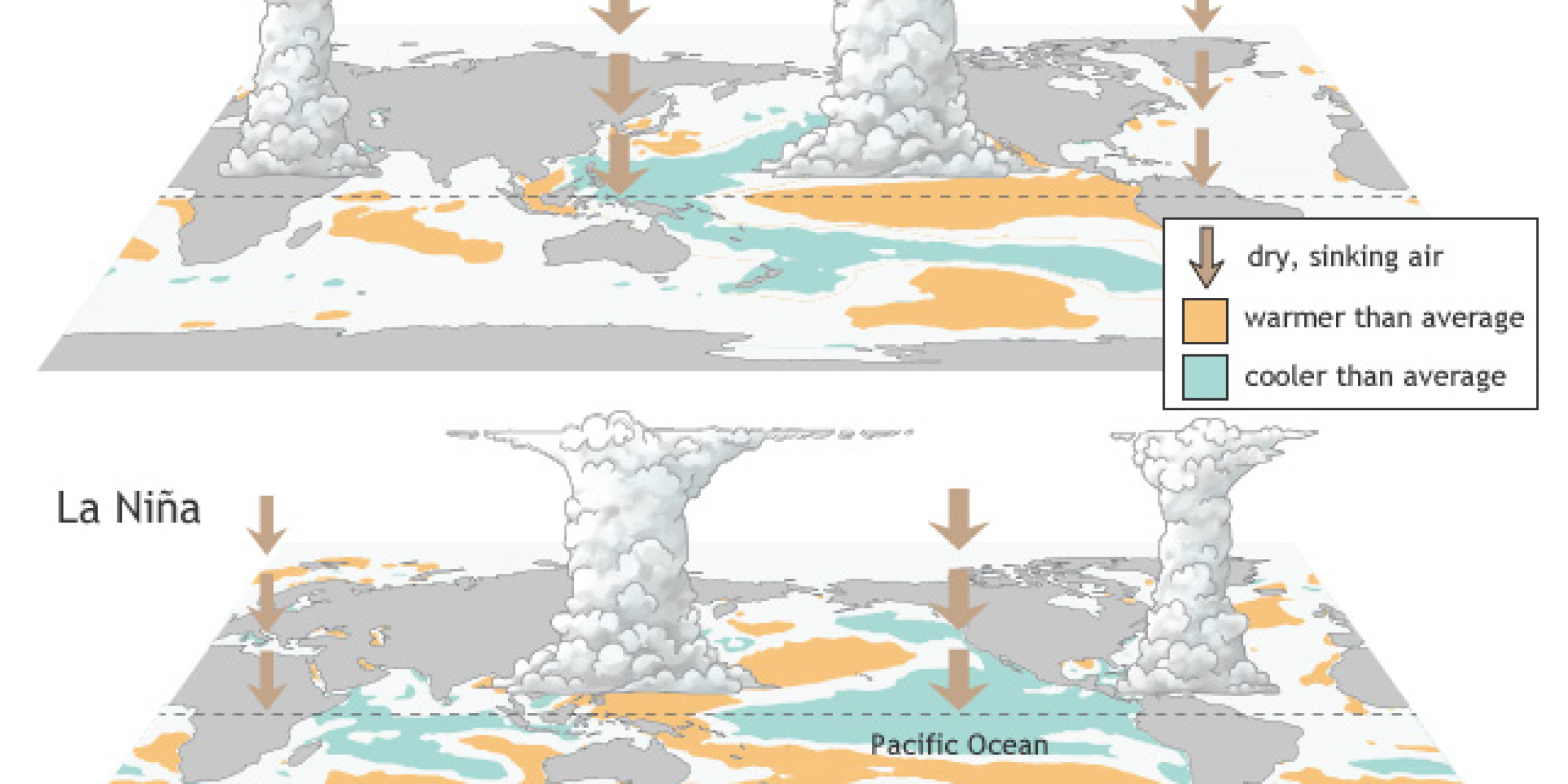Sea surface temperature anomaly and atmosphere circulation during El Niño and La Niña events. Credit: https://www.climate.gov/enso
El Niño-Southern Oscillation (ENSO) is a recurring climate pattern with alternative warm or cool phase across the tropical Pacific which shifts irregularly every two to seven years. Though ENSO is a single climate phenomenon, it requires a coupled process between ocean and atmosphere. The El Niño refers to the ocean component of ENSO with an above-average sea surface temperatures (SST) in the central and eastern tropical Pacific Ocean. The Southern Oscillation indicates the shifting of atmospheric pressure between the central/eastern Pacific and the western Pacific. The feedback in the air-sea interaction via equatorial winds, internal waves, ocean upwelling and circulation lead to the development of El Niño and a reverse to its opposite phase (La Niña).
Although ENSO arises from changes across the tropical Pacific Ocean, it has profound impacts on global climate due to its ability to alter the global atmospheric circulation, which in turn influences temperature and precipitation across the globe with great societal and economic impacts. For instance, the change of equatorial upwelling and SST affect the species composition and abundance of fishes off the coast of the Americas. ENSO is often associated with extreme weather such as drought, flooding rains and hurricanes in some regions (e.g. Peru, Indonesia, Africa, Australia and North America). Thus, ENSO is the major source of predictability in seasonal-to-interannual climate prediction and its dynamical forecast was first successfully developed over 30 years ago.
However, with the improvements in the climate prediction models and the observing system for providing model forecast initial conditions, the prediction capability for ENSO has not shown steady improvement during the past few decades. One possible cause is the lack of understanding on the long-term changes in the properties and climate system impacts of ENSO.
In a recently published review article in Journal of Climate, authors Zeng-Zhen Hu, Arun Kumar, Jieshun Zhu, Michelle L’Heureux, Michael J. McPhaden, Jin-Yi Yu, and MAPP-funded PI Bohua Wang, summarized that the decline of model predictive skill on ENSO after 2000 was mostly associated with the interdecadal shift of ENSO characteristics including a reduction of variability and an increase of frequency. From the review, the regime shift in ENSO around 1999/2000 might be physically connected to the change of mean state contrast across the tropical Pacific and shift of atmosphere-ocean coupling. The recognition of this regime shift not only improves the understanding of natural variability of ENSO, but also explains the decreasing model prediction due to reducing efficacy of the key ENSO predictor.
———————————————————————————————–
About MAPP
The Modeling, Analysis, Predictions, and Projections (MAPP) Program is a competitive research program in NOAA Research’s Climate Program Office. MAPP’s mission is to enhance the Nation’s and NOAA’s capability to understand, predict, and project variability and long-term changes in Earth’s system and mitigate human and economic impacts. To achieve its mission, MAPP supports foundational research, transition of research to applications, and engagement across other parts of NOAA, among partner agencies, and with the external research community. MAPP plays a crucial role in enabling national preparedness for extreme events like drought and longer-term climate changes. For more information, please visit www.cpo.noaa.gov/MAPP.



